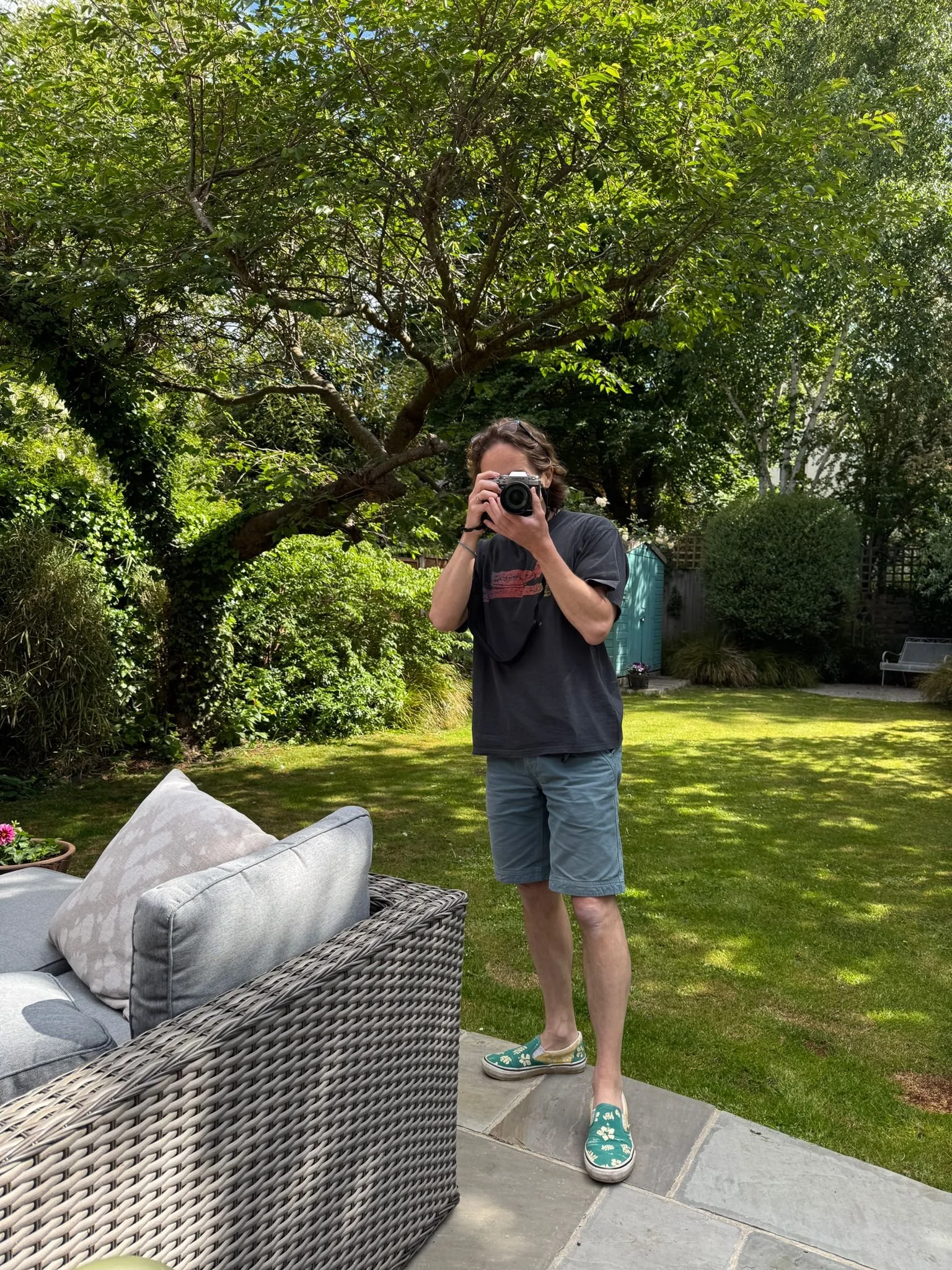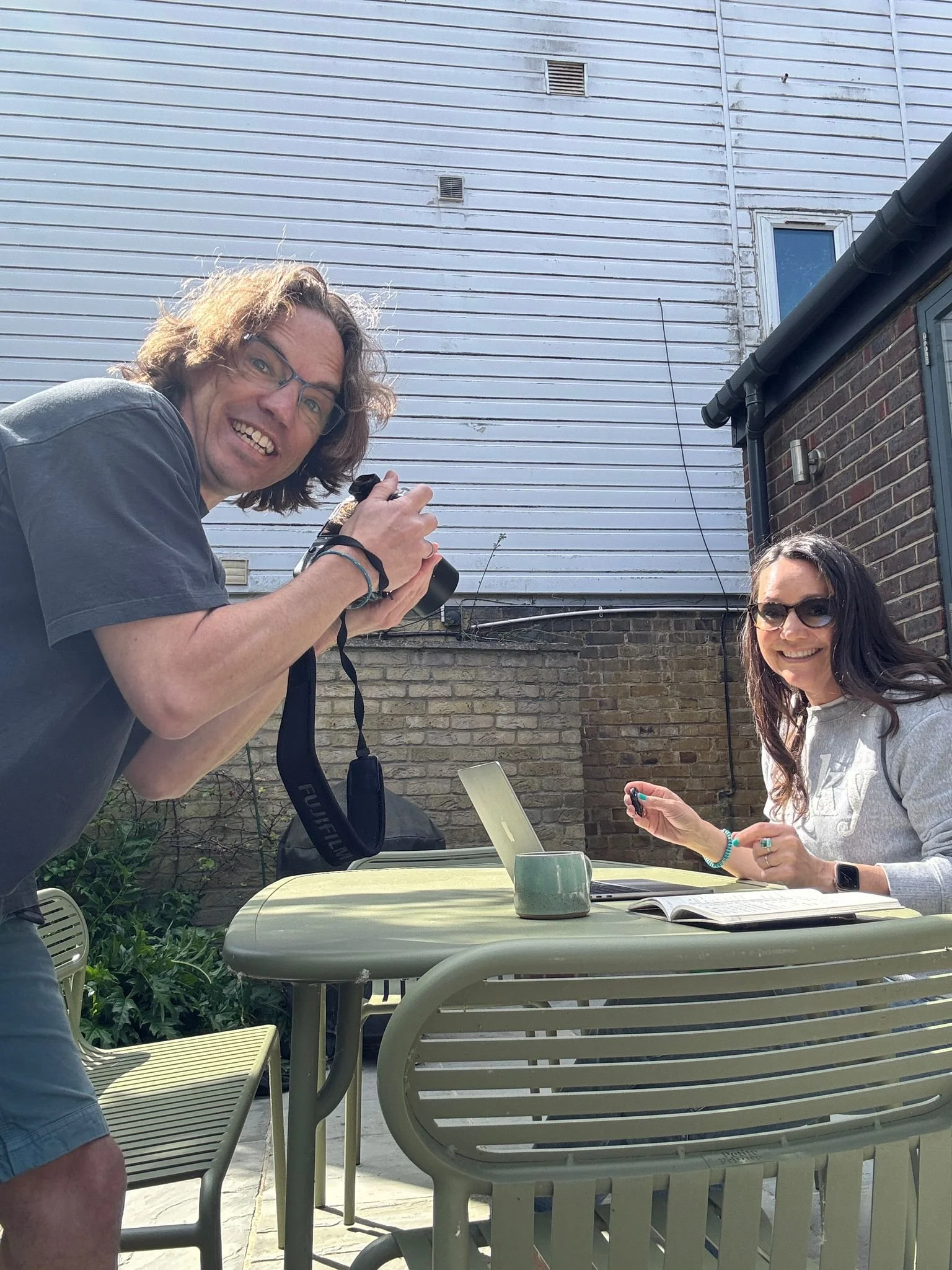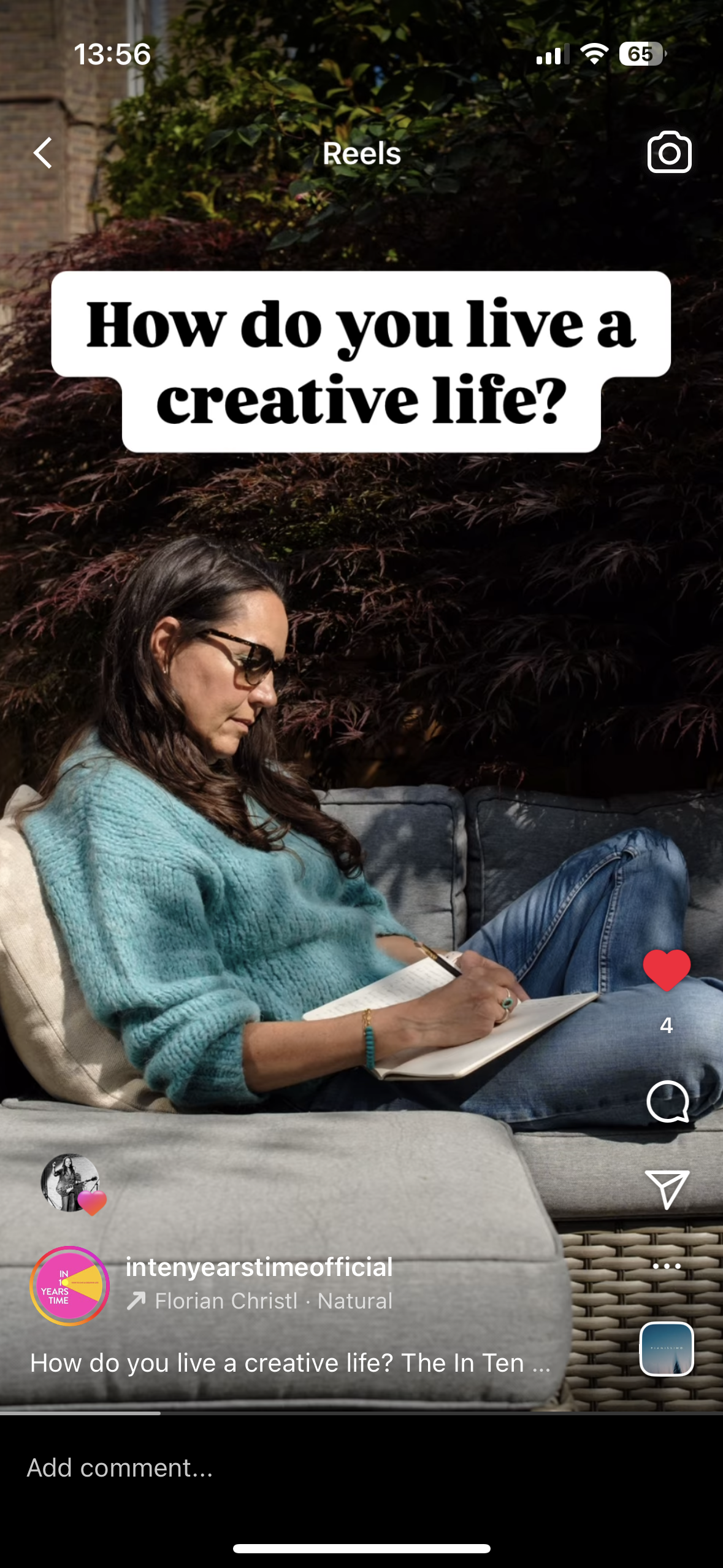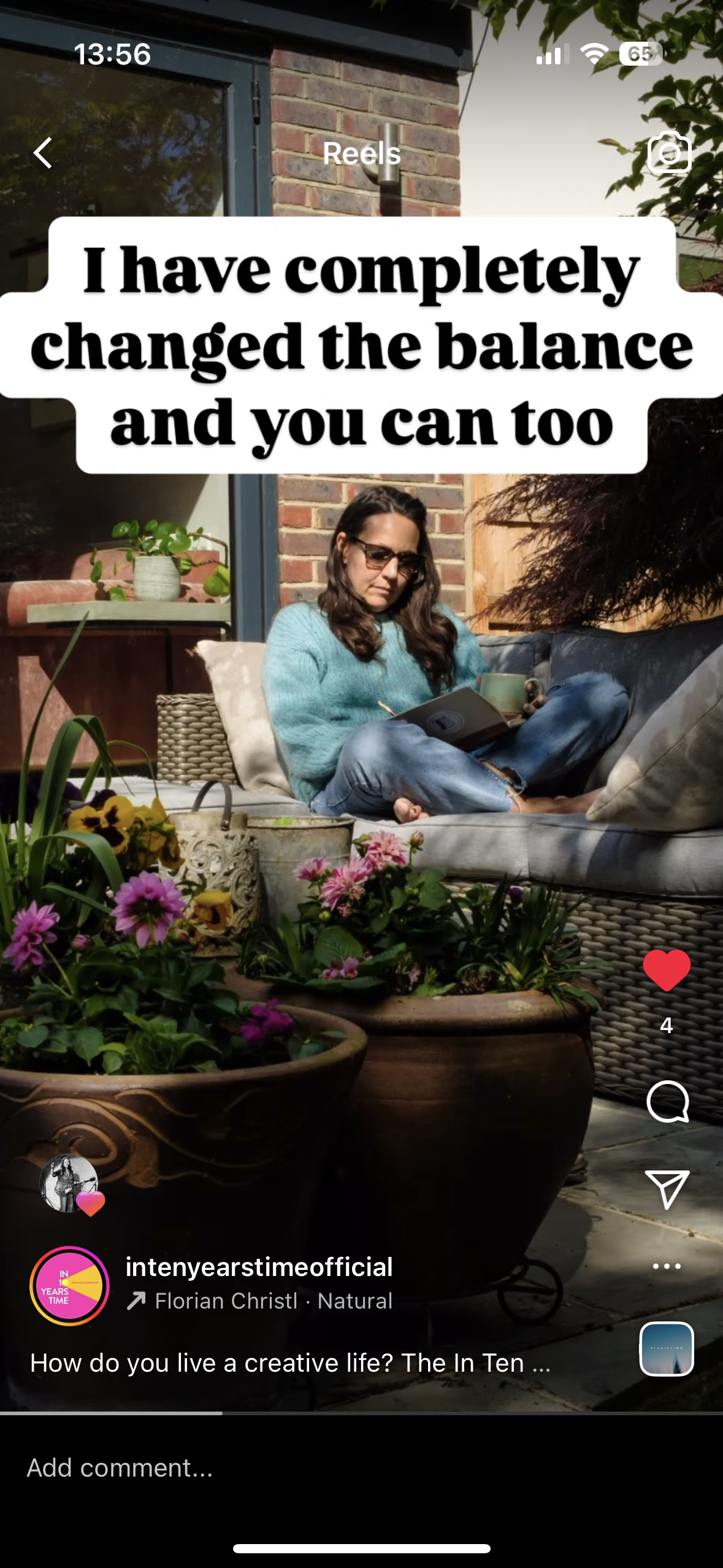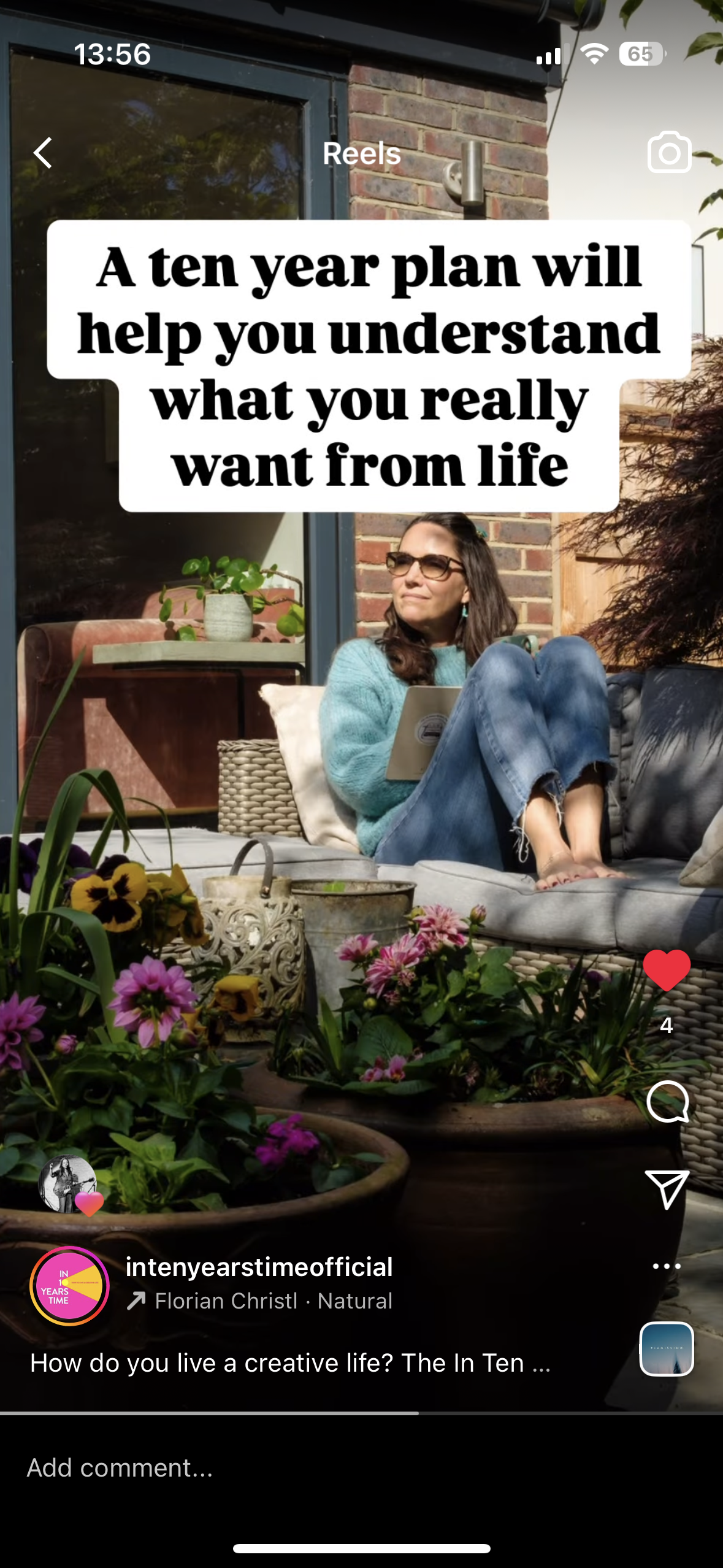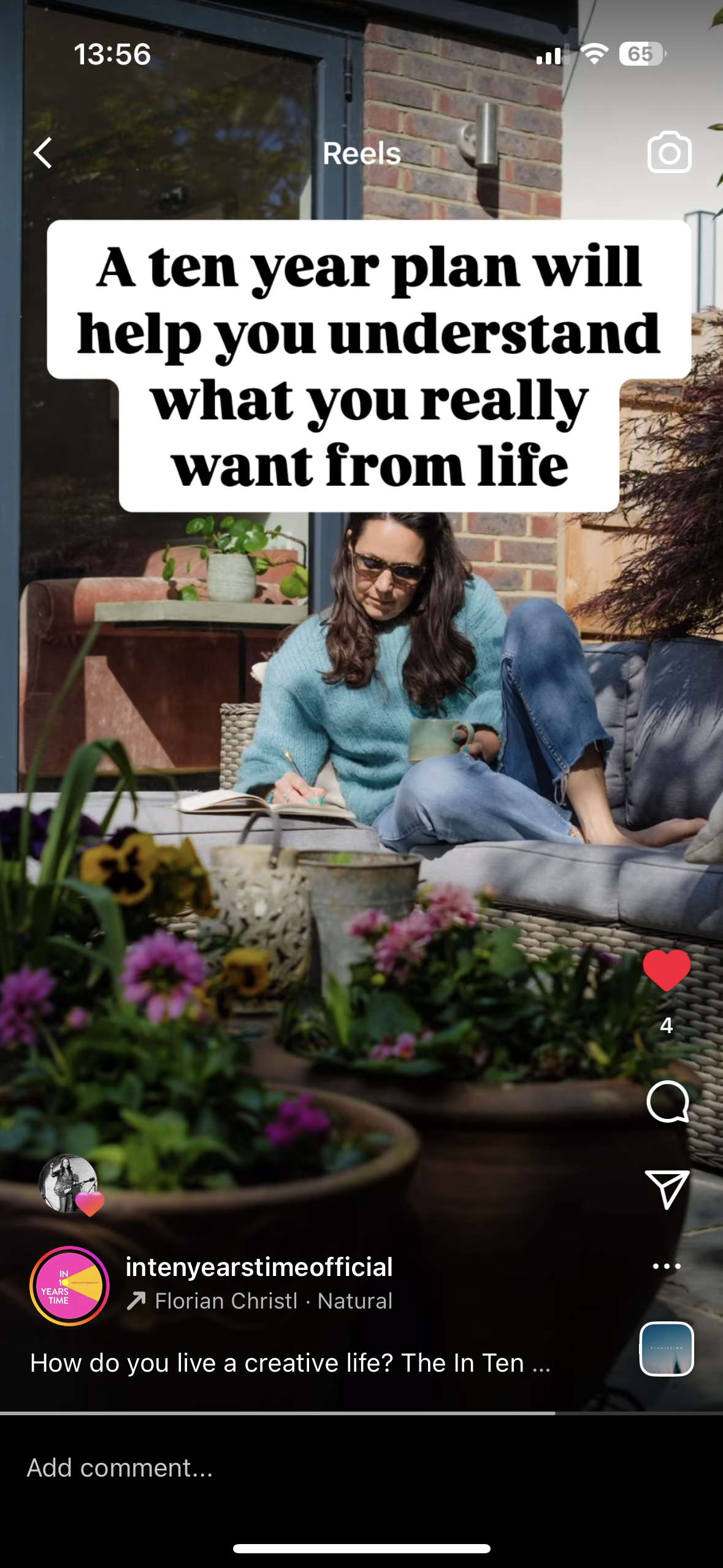Tricia Duffy, Lifestyle Shoot
Tricia Duffy is many things: songwriter, podcaster, public speaker, creativity coach, and management consultant. A friend of mine from when we both started out in television some 30 years ago, she’s now navigating multiple avenues of life and work, and as such, needed to build a visual library of the multiplicity of her creative and working output.
I worked with her to plan and photograph a lifestyle image library so that she can be prepared when speaking, writing, performing, or other opportunities arise. She plans to use the images in her own social media and marketing output, but also to sub-license them to other publishers such as podcast hosts and magazine editors to illustrate articles, or show examples and proof points.
As with most clients, I started the project with a video call where we talked through the types of image she was looking for, the likely outputs, examples of work she’d had to use in the past that didn’t quite meet her needs or for which she’d have liked to have something better.
I have a background in project management, so find it really useful to know “what good looks like”, for a client, as well as to understand where previous projects or self-made photography might have been viewed as sub-standard or a let down. By discussing this I hope to avoid producing work that is neither useful nor loved.
In the weeks following our first project meeting, we co-curated a Pinterest board and had parallel discussions on WhatsApp to bounce ideas off one another. While Pinterest’s algorithm can be frustrating at times, its recommendations of similar images can be useful. Using it, or some other mood board application, is a great way of arriving at a client photoshoot with a shared idea of what types of photographs are needed and how they should ultimately look.
On the day of the shoot we used a shared Apple Note of activities to document such as Journaling, Cycling, Podcasting, etc. that we could tick off to make sure we hit all of the images Tricia needed. Shoots like this can be busy so need planning and disciplined coordination; you can’t simply turn up with a camera and hope to capture everything by just documenting someone going about their day.
The shoot was sequenced in relation to the movement of the sun around Trish’s house, so that we could intentionally use each room either in shade, or with the sun coming through the windows as needed for the mood of each image series. We started in the back room and garden for the journaling images and for some back-garden office work.
In the days leading up to the shoot I had been re-reading a compilation of interviews with Henri Cartier-Bresson. A master of candid photography and a passionate advocate of only using natural light. He makes a compelling argument against the use of flash, so I left mine in their storage cupboard and for this shoot opted to craft whatever light Tricia’s house offered up.
I am endlessly fascinated by architecture and the way spaces guide us to behave in certain ways, how they invite us to be. When photographing, I’m always alert to the possibilities of environmental symmetry, whether through leading lines or colour.
This photograph was taken early on in the shoot on the theme of journaling. I love how the foliage outside matches the colour of the furnishings inside. Tricia sat in the middle, dressed in light blue and denim provides for lovely balance of colour. The reddish-purples she is surrounded by sit on the opposite side of the colour wheel to teal, creating a calm equilibrium.
Tricia commissioned a day-long shoot, and in that time I took close to 2000 negatives. It’s not practical to process them all to a standard that is good enough for publishing, but it is also not practical to ask a client to wade through all of the negatives and pick out the ones they like. Often, a sitter will have a strong sense of which photographs align with their preferred self-image. However, a client might not grasp the full photographic potential of certain shots, as they may not be aware of the specific creative vision or potential I had in mind at the moment of capture.
This portrait of Tricia writing at the piano is probably a good case in point. The negative is relatively flat, and the inclusion of so much staircase may not, on the surface, seem to be very useful.
When I looked through my viewfinder I saw the latent warmth of the room Tricia was in compared to the potentially darker, colder elements of an empty house. The comfort around her a symbol of how the act of songwriting makes her feel, as well as a broader reflection on how we all make and disappear into our own spaces to read, think, create or otherwise remove ourselves from the world into our own peace of mind.
Straightening the lines of the image and recovering highlight detail; then darkening and cooling the tones of the staircase whilst boosting the warmth and contrast of the piano room, it is only through processing the image this way that it really turns into what I saw in my head on the day.
Instead of overburdening a client with having to pick from everthing that was shot and understand how those images might look once I’ve played with them, I typically process a large number of images from the shoot so that they can better see what the act of ‘processing’ brings to an image, and also gives them a set of ready to go images for immediate use.
















Within a day of Tricia getting a link to her photographs, she was using them to market her ‘In Ten Years Time’ coaching programme. I look forward to seeing images from this series pop up all over the place in the coming weeks, months and hopefully years.
You can find out more about the broad range of things Tricia gets up to on her LinkedIn account, or jump straight to her In Ten Years Time project to see how you can live a more creative life.


